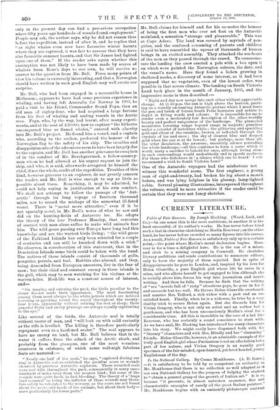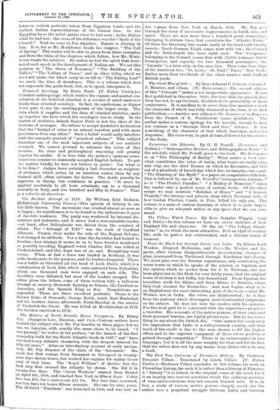In the National Gallery. By Cosmo Monkhouse. (A. D. Innes.)
—It is satisfactory to be told by so competent an authority ac Mr. Monkhouse that there is no collection so well adapted as is our own National Gallery for the purpose of helping the student to "obtain a general grasp of the growth of Italian art." It is so, because "it presents, in almost unbroken sequence, fine and characteristic examples of nearly all the great Italian painters." Mr. Monkhouse begins with an eminently picturesque contrast
between certain portraits taken from Egyptian tombs and the earliest Italian representations of the human face. In the Egyptian faces the artist paints what he had seen ; in the Italian what he had not; the cause of the difference was the "Spell of the Church." Next we come to Fra Angelico. Nature is stirring in him. It is, for so Mr. Monkhouse heads his chapter, " The Call of Spring." The reader will be able to guess from these examples, and from the titles of the chapters which follow, how Mr. Monk- house treats his subjects. He makes us feel the spirit that domi- nated each epoch in the development of Italian art. We see this purpose in " The Shore of Romance," " The Building of the Palace," "The Valleys of Peace," and in other titles, which we need not quote, but which carry us on till in " The Falling Leaf" we reach the time of decadence. This is a volume which does not supersede the guide-book, but, so to speak, interprets it.



















































 Previous page
Previous page